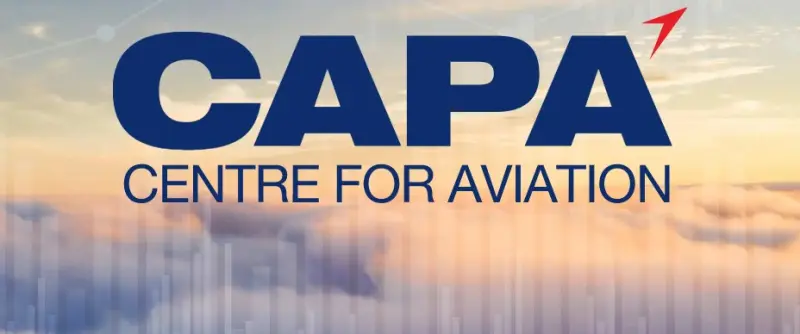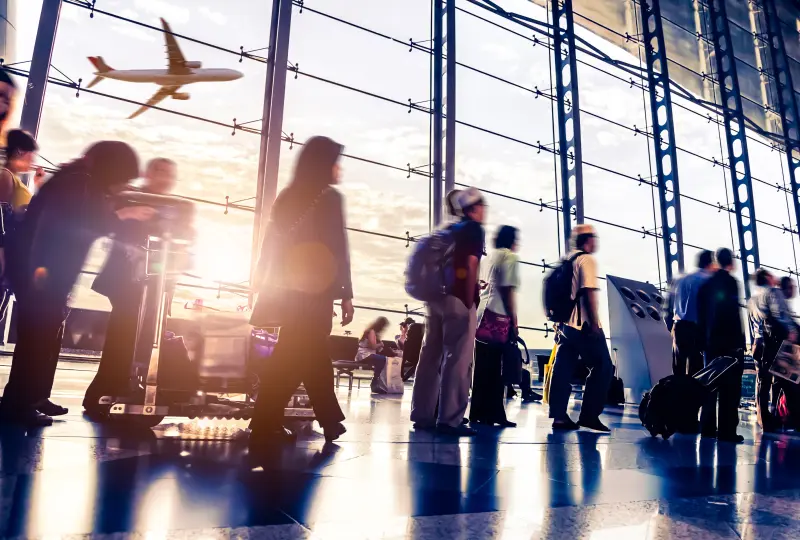Each week, CAPA – Centre for Aviation produces informative, thought provoking and detailed market analysis of the aviation industry. With supporting data included in every analysis, CAPA provides unrivalled and unparalleled intelligence.
Here’s some of the reports published over the past week.
North Atlantic aviation: renewed strength is welcome; low cost airlines rebuild

According to IATA, Europe to North America became the first international route region globally to recover RPKs back above 2019 levels when it crossed this threshold in Jan-2023. It has remained above it throughout 2023 (as of Aug-2023, the most recent month) – the only traffic region to do so.
There is a lag in reporting traffic data, but weekly capacity data from CAPA – Centre for Aviation and OAG confirm that the recovery in the North Atlantic aviation market has continued into Oct-2023. It is the only major long haul region to/from Europe with capacity above 2019 levels.
The North Atlantic is dominated by immunised JVs, with their seat share up from 73.7% in 2019 to 78.6% in 2023. However, LCCs have taken some share away from them in 2023, compared with 2022.
North American airlines occupy four of the top five places in the capacity ranking on the North Atlantic, but European airlines have a bigger overall seat share.
The North Atlantic recovery is welcome to the latter, as it is their most important long haul region.
TO READ ON, VISIT: North Atlantic aviation: renewed strength is welcome; low cost airlines rebuild
United Airlines’ latest order extends its order book lead in North America

United Airlines’ recent order for 110 aircraft has bolstered its status as the airline with the largest aircraft order book in North America.
United has ordered 50 Boeing 787-9s and 60 Airbus A321neos for delivery from 2028 to 2031. The latest additions solidify the airline’s order book through the end of the decade.
As the Chicago-based airline works to fill out its aircraft orders for the rest of the decade, United’s US large network airline peers are taking a different approach.
American Airlines completed a re-fleeting exercise before and during the COVID-19 pandemic, while Delta Air Lines appears to be working through its fleet strategy – particularly for widebody aircraft.
TO READ ON, VISIT: United Airlines’ latest order extends its order book lead in North America
MYAirline succumbs to financial squeeze in a competitive Malaysian market

The Malaysian LCC MYAirline has suspended operations after efforts to get new investment were unsuccessful, leaving it with no option but to halt flights while it continues its pursuit of fresh funding.
The airline was launched less than a year ago, and its predicament underlines how challenging the domestic and short haul international market is in Malaysia – for LCCs in particular.
Just three days before its suspension, MYAirline was expressing optimism that a stakeholder deal was imminent. There were media reports that a local investor was interested, but such a deal did not eventuate in time.
Despite the fact that the airline industry is in a high demand environment, international capacity is still lower than pre-pandemic levels and profitability is far from guaranteed for smaller operators.
TO READ ON, VISIT: MYAirline succumbs to financial squeeze in a competitive Malaysian market
Europe-Latin America aviation: TAP Air Portugal sale to change market structure

Europe to Latin America, the third most important long haul region for European airlines, is back to 98% of 2019 capacity.
This places it below the North Atlantic, but ahead of Europe-Asia Pacific.
Within the Europe to Latin America market, Upper South America is the biggest sub-region, while Central America is the only one above its 2019 capacity levels.
European airlines dominate Europe-Latin America, with 78% of seats scheduled for the first week of the winter 2023/2024 season, but Latin American airlines have modestly gained seat share since pre-pandemic.
Air France and Iberia are the top two airlines by seats, with Air France-KLM and IAG the leading groups. Europe’s other major group, Lufthansa Group, is only seventh.
However, all three have shown interest in the forthcoming privatisation of TAP Air Portugal, which could significantly change the rankings. It will certainly increase concentration in the Europe-Latin America market.
TO READ ON, VISIT: Europe-Latin America aviation: TAP Air Portugal sale to change market structure
Go First dispute spurs improvements in India’s lessor protections

While the Indian government’s move to solidify lessors’ rights could cause headaches for the bankrupt airline Go First, in the longer term it should help second-tier Indian airlines secure aircraft lease deals.
The ruling by India’s Ministry of Corporate Affairs (MCA) reinforces the ability of lessors to reclaim their aircraft when an airline declares insolvency. This step was spurred by a court’s decision to place a moratorium on the repossession of Go First’s leased aircraft during its bankruptcy restructuring.
Go First’s lessors have been challenging the earlier court decision, and the latest MCA edict will give them new leverage.
Meanwhile, some other Indian airlines have applauded the MCA’s clarification, as it will give lessors greater confidence in sending aircraft to India.
TO READ ON, VISIT: Go First dispute spurs improvements in India’s lessor protections
Poland’s Central Polish Airport starts to take shape: part one – entering decisive development phase

By comparison with the tortuous 14-year journey made by Berlin Brandenburg Airport from conception to completion, the New Central Polish Airport (CPK) is moving along at a cracking pace, as fast as the high-speed rail lines – which should eventually connect it to all corners of the country, and for which there is no real comparison anywhere else in the world; a ‘central’ airport for an entire nation.
That said, no spades have yet turned over a single clod of earth, and huge mega airport projects like this have floundered and expired elsewhere on a change of government, which could happen right now in Poland where a general election has just been held.
CPK will become the world’s testing ground for new airports in the next few years.
Previous ones like Istanbul and Beijing Daxing have been completed successfully, whereas Berlin Brandenburg took a generation to conclude. Mexico City’s was scrapped well into its construction phase, and London Heathrow has been waiting for its third runway since the Bath Road (near which it is located) was illuminated by gas lamps and highway robbers patrolled it.
If CPK does continue in the envisaged format it will be able to handle 40mppa when it opens in 2028/9, scalable to 100mppa – although that seems fanciful, in view of the 50mppa who flew into, out of, or through all of Poland in 2019.
Nonetheless, with a merger of CPK and PPL Polish Airports completed the hunt is on for a private sector investor (and possibly operator) that is prepared to come up with some serious cash on the promise that the airport will pay for itself in 12 years.
This is part one of a two-part report.
TO READ ON, VISIT: Poland’s Central Polish Airport starts to take shape: part one – entering decisive development phase
Manchester – biggest airport sector loser from cancellation of UK’s HS2 northern rail line. Part two

When the UK’s HS2 high-speed rail line northwards out of London was first envisaged well over a decade ago by a previous government the intention was clear – by connecting London to key cities in the Midlands and North of England those cities and their regions would reap tremendous economic benefits and would be ‘levelled up’ to the living standards found in the southeast of the country.
But bit-by-bit the initial scheme, the costs for which spiralled out of control, has been pared back, initially removing cities like Nottingham, Sheffield and Leeds and their hinterlands from the equation.
Now the UK prime minister, making his keynote speech at the Conservative Party conference in Manchester has pulled the plug on the second phase of the line, which is to Manchester.
The decision on Europe’s largest transport infrastructure project has implications for the airport sector, where Birmingham is clearly a winner while Manchester is assuredly not.
This is part two of a two-part report.
TO READ ON, VISIT: Manchester – biggest airport sector loser from cancellation of UK’s HS2 northern rail line. Part two
- asia
- south pacific
- capa – centre for aviation
- europe/mea
- the americas
- industry intelligence
- market analysis









